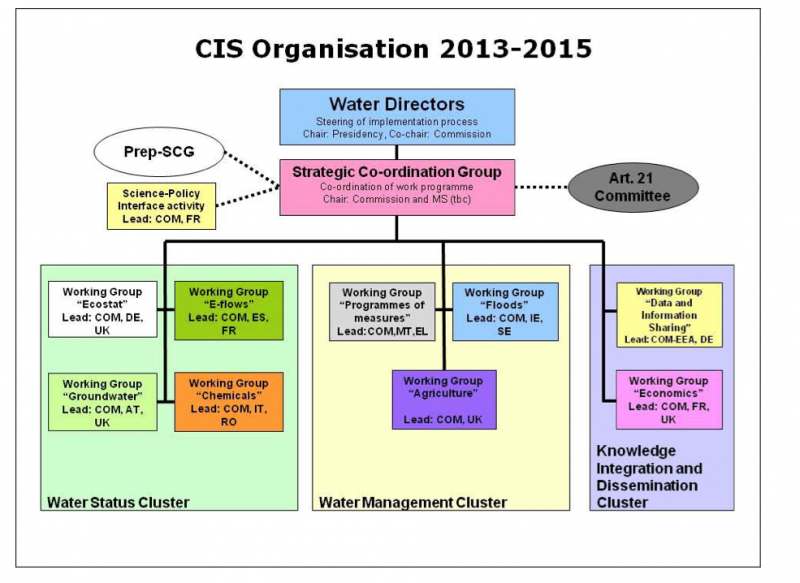The Water Framework Directive (WFD) is a very complex piece of legislation. Right from the beginning, it became clear that implementation would be very challenging, and that there is a need for Member States, stakeholders, and the European Commission to develop common understanding of the key issues and to agree on common solutions to ensure a harmonised implementation. To achieve this, a Common Implementation Strategy (CIS) was established in 2001. In five subsequent work programmes spanning twelve years, the CIS has produced 29 guidance documents addressing topics from the identification of water bodies and guidance on reporting to public participation and economics. Also, the intercalibration exercise ensuring comparability and consistency of the Member States’ ecological status classification methods was carried out under the umbrella of the CIS.
Current focus of the CIS
Even more than ten years after the adoption of the WFD there are still many issues that require common solutions. The 'Water Blueprint' published by the EC in November 2012 together with the 3rd WFD implementation report identified serious implementation gaps and needs for actions to be taken to achieve WFD objectives. To address these challenges, another CIS work programme was adopted recently to cover the period 2013-2015. The focus in this new work programme is on three broad topics - water status, water management, and knowledge integration and dissemination. The work is organised in nine working groups grouped in three clusters (Figure 1).


Figure 1. Organisational structure of CIS 2013-2015.
Hydromorphology in the CIS work programme 2013-1015
In the Water Blueprint, hydromorphological pressures were identified to be amongst the main factors preventing the achievement of good ecological status in the EU. In the new CIS work programme, topics related to hydromorphology are addressed in several working groups:
- The Ecological Status working group addresses the harmonisation of approaches for ecological potential, requiring information exchange on the assessment of hydromorphological impacts and the classification of heavily modified water bodies. Also, the integration of information from biological, physicochemical, and hydromorphological quality elements in the assessment of ecological status will be addressed.
- The working group on environmental flows (e-flows) is developing a guidance document to be completed in 2014 focusing on common understanding and best practices.
- The working group "Programmes of Measures" (PoM) has identified 'hydromorphology and natural water retention methods' as one of its main topics. Among other things, the PoM working group will organise a workshop on best practices in addressing hydromorphological pressures in 2014.
CIS & REFORM
CIS and REFORM have been and will remain in close contact. REFORM was presented during the CIS workshop on hydromorphology in June 2012, and a back-to-back meeting was organized in conjunction with REFORM’s stakeholder workshop in February 2013. Evdokia Achilleos (DG Environment) and Peter Pollard (SEPA) are members of the REFORM advisory board. The present CIS work programme has multiple linkages with the scope of REFORM, in particular regarding hydromorphology and programmes of measures. Thus, opportunities to interact will be sought for during the remainder of the REFORM project in 2014 and 2015.
Further links
CIS guidance documents: http://ec.europa.eu/environment/water/water-framework/facts_figures/guidance_docs_en.htm
CIS work programme 2013-2015: http://ec.europa.eu/environment/water/water-framework/objectives/pdf/Work%20Programme%202013-2015.pdf
Water Blueprint and WFD implementation reports: http://ec.europa.eu/environment/water/blueprint/
Author
Wouter van de Bund, European Commission Joint Research Centre
